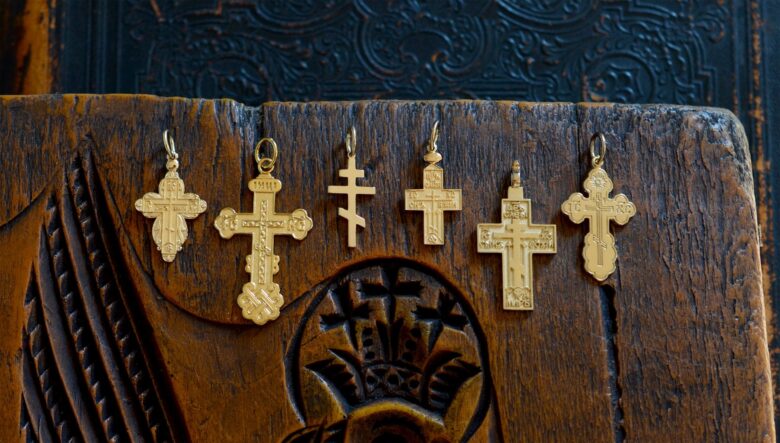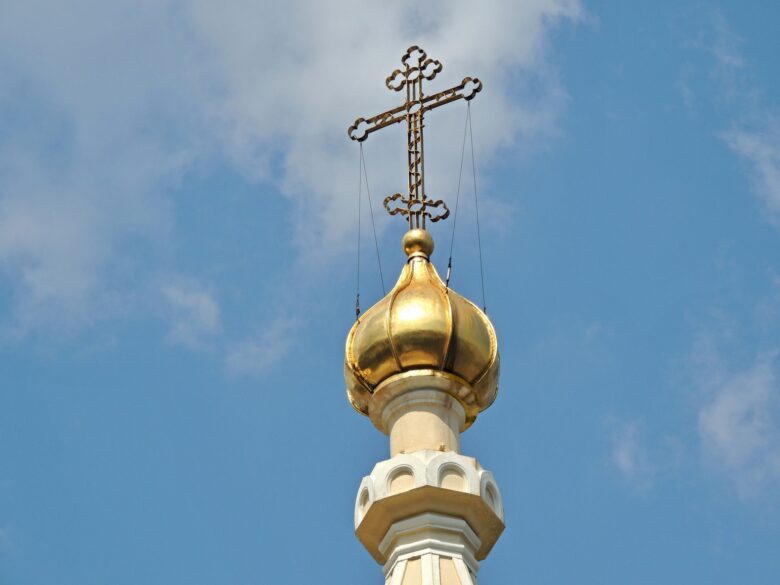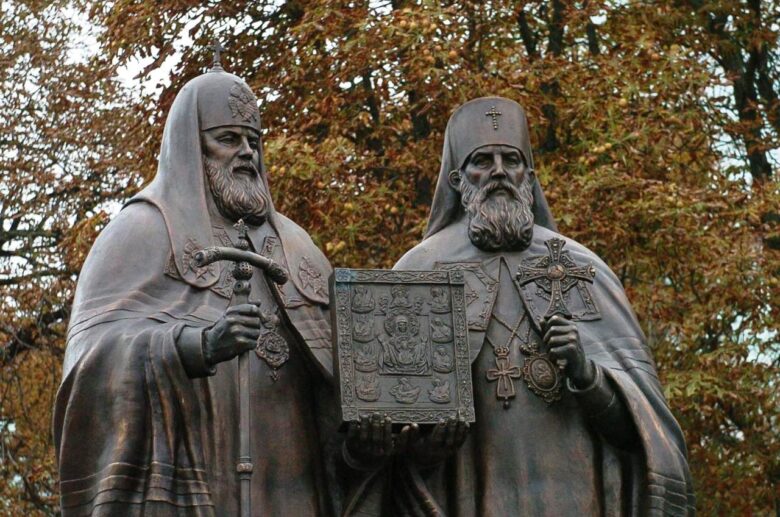Orthodox crosses are an essential aspect of Orthodox Christianity. The history and meaning behind these crosses can be traced back to the beginning of the Orthodox Church. This blog aims to explore the background behind these crosses, their significance and symbolism in the Eastern Orthodox Church, and how they differ from other crosses.

Source: gallerybyzantium.com
Contents
Types of orthodox crosses
Orthodox crosses differ in various ways from other crosses, and it is evident from the shapes. These crosses lack the extended arm, which is commonly present in other crosses, and instead, they have another beam or bar. The combination of these two cosmic elements, the vertical line, and a horizontal line, symbolizes the connection between heaven and earth. This connection is essential to Orthodox Christians as they believe that the Son of God came down from heaven. Also, the two bars symbolize the two crucifixion locations – Mount Calvary’s biblical location and the unearthly place of Adam’s skull.
The unique design’s symbolism is also highlighted by the three horizontal lines that are present at the foot of this cross. These lines represent the footrest of the crucified Christ and depict Christ’s glory as the King of the Jews. The upper horizontal bar of the cross is inscribed with the letters “INRI,” which is the abbreviation of Jesus’ title “King of the Jews” in Latin.
The Orthodox cross can be distinguished in various ways, depending on the location or the time of its creation. For instance, the Russian Orthodox cross has curved edges, and the St. Andrew’s cross has slanted bars that represent the Saint’s crucifixion. These additional variants do not change the core symbolism and meaning of the Orthodox cross.

Source: canva.com
Orthodox cross as a sign
Orthodox Christians often use the sign of the cross in prayer as a way to center themselves and revere God. This practice is achievable due to their belief that God inhabits all three dimensions – height, width, and depth – and that the cross symbolizes Christ’s journey through all of them. Even the positioning of fingers while making the sign of the cross holds symbolism. The three fingers represent the Holy Trinity, while the two fingers pressed towards the palm represent the two elements of Christ’s incarnation – divinity and humanity.
Cultural Significance
Orthodox crosses hold great cultural significance within the communities they represent. They are not merely religious symbols but also serve as cultural markers of identity and heritage. In countries with strong Orthodox Christian traditions, such as Russia, Greece, and Serbia, Orthodox crosses are often worn as personal adornments, displayed in homes, and featured prominently in religious ceremonies.
Source: aucklandartgallery.com
Iconography and Religious Art
Iconography is a cherished tradition in Orthodox Christianity, where religious art plays a pivotal role in conveying spiritual truths and fostering devotion. Orthodox crosses, with their distinctive design and profound symbolism, are recurring motifs in religious icons and artworks. These sacred images, created with meticulous attention to detail and deep spiritual insight, serve as windows to the divine and vehicles of theological teachings.
Orthodox icons, often painted on wood panels, showcase the cross as a central element. Whether in the form of a standalone cross or as part of a larger composition, the iconographer’s skillful brushwork brings the cross to life, capturing its essence and communicating its significance. The icons depict Christ on the cross, the Virgin Mary embracing the cross in sorrow, or saints and martyrs bearing the cross with unwavering faith. Each representation is imbued with profound symbolism, evoking a sense of awe and inviting contemplation.
The art of iconography goes beyond mere aesthetic beauty; it is a sacred language that speaks directly to the soul. Every brushstroke, color choice, and composition is laden with theological meaning. The use of gold leaf, vibrant pigments, and intricate patterns conveys the glory and transcendence of the divine realm. The artist’s careful attention to proportion, posture, and facial expressions imparts a sense of spiritual presence and invites the viewer into a deeper encounter with the divine mysteries.
Religious mosaics and frescoes found in Orthodox churches also feature Orthodox crosses in their intricate designs. From the grand domes to the walls and vaults, these mosaic and fresco installations create a tapestry of spiritual narratives. The cross, often placed at the heart of the composition, serves as a focal point and a visual anchor, reminding worshippers of the redemptive work of Christ and the invitation to embrace the cross in their own lives.

Source: mospat.ru
Orthodox sculptures, carved from stone or wood, bring a three-dimensional aspect to the representation of the cross. From small devotional pieces to monumental works adorning church facades, these sculptures showcase the craftsmanship and devotion of the artists. The tactile nature of sculptures invites a physical and sensory engagement with the cross, further deepening the spiritual experience.
Through iconography and religious art, Orthodox crosses become channels of grace and gateways to the divine. They offer a visual language that transcends words, stirring the imagination and kindling the flame of faith within the believer’s heart. As worshippers contemplate these sacred images, they are drawn into a sacred space where heaven and earth meet, where the eternal significance of the cross is made tangible and transformative.
The Orthodox cross, with its unique design and symbolism, holds a special place in the heart of Orthodox Christians. The Orthodox crosses’ unique symbolism and meaning have remained unchanged over time, demonstrating their importance to Eastern Orthodox Christians. We hope that this blog has provided some insight into the history and meaning behind Orthodox crosses. Even non-Orthodox Christians can be inspired by the cross’s profound symbolism and the way it brings people closer to God.
